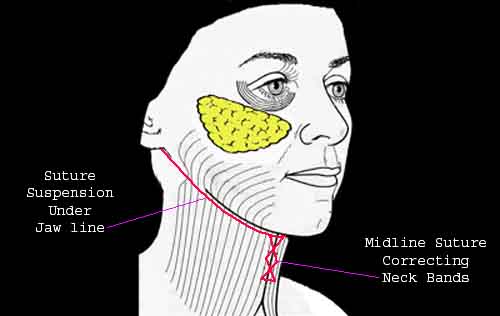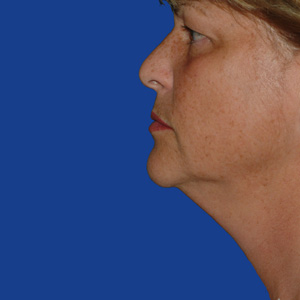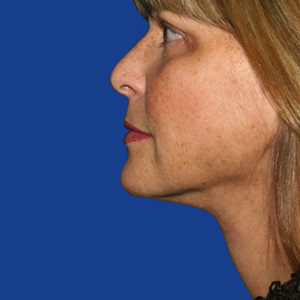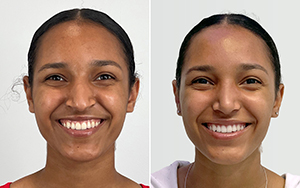Consultation
Neck Lift Consultation and Physical Exam
- Neck Lift Overview
- Neck Rejuvenation
- Are You a Good Neck Lift Candidate?
- What Do You Want to Change?
- Ideal Neck
- Benefits of Neck Lift
- Joseph T Cruise, MD’s Neck Lift Philosophy
- Neck Lift Consultation and Physical Exam
- Prior to Neck Surgery
- Neck Lift Anesthesia
- After the Neck Lift
- Recovery from Neck Lift
- Possible Neck Lift Complications
- Neck Lift Cost and Financing
- Neck Lift Words to Know
- Before and After Neck Lift Pictures
Health History
All cosmetic surgery consultations begin with a thorough health history. This is especially true if general anesthesia is being used, but also applies to local anesthesia. Neck Lifts are usually done under general anesthesia. Prior to meeting with Joseph T Cruise, MD you will be given a health history questionnaire to fill out in the waiting area. There are five areas of your health you will be asked about. Be sure to answer it with detail so that your surgery and anesthesia can be optimized for you.
- General Health
General health problems are important to discuss so that your surgery is as safe as possible. Be sure to mention any chronic illness. Of particular concern are: high blood pressure, diabetes, heart problems, liver and kidney disease, stroke, cancer, bleeding problems, and wound healing problems.
What will Joseph T Cruise, MD do if I have medical problems?
In short, he will make sure your health is optimized as much as possible to ensure your safety. This may mean referring you to your private physician.
If you have a health problem or are over 50 years of age you can often save yourself time by getting a letter from your private physician prior to your cosmetic consultation stating what the health problem is, how it is being treated, and whether or not you are able to tolerate general anesthesia safely.
If you are seeing any specialist (i.e. cardiologist, kidney doctor, psychiatrist, etc.) be sure to bring a letter from them stating that you are able to tolerate surgery.
If you are not able to tolerate general anesthesia it may be possible for your neck lift to be done under local anesthesia. This must be discussed with Joseph T Cruise, MD.
Be sure to let Joseph T Cruise, MD know if you have ever had a blood clot.
- Past Surgical History
On your questionnaire you will be asked about previous surgeries. Be sure to identify any problems you may have had with anesthesia. Of particular concern are previous cosmetic surgeries especially if you do not like the result and are interested in revision.
- Medications
Be sure to list all medications you take including aspirin and over-the-counter medications. These are important as they may increase bleeding and affect your surgery. It is extremely important to stop taking aspirin and aspirin containing products at least 10 days before surgery. Tylenol is a good alternative. Here is a partial list of aspirin containing products and other products to be avoided prior to surgery.
- Allergies to Medications
Information about medications that cause allergies is very important so that these medications can be avoided. Of particular importance is the reaction you had, especially if you had trouble breathing. Be sure to include this information! Nausea is not an allergy but it is important to mention as well.
- Smoking, Drinking and Drug Use
These three will certainly affect your surgery and MUST be mentioned so that your surgery can be optimized. Smoking causes a profound decrease in wound healing and will lead to worse scarring and a less favorable result. With large procedures such as a face lift, neck lift, tummy tuck, and breast lift smoking must be stopped at least 3 weeks before and after surgery. Otherwise, the results could be disastrous leading to non-healing wounds, poor scarring, and/or infection. With smaller procedures such as eyelid surgery, nose surgery, breast augmentation, and liposuction smoking will hurt the overall result but this may or may not be noticeable. In this case smoking cessation is strongly advised but is not mandatory.
Neck lifting involves elevating the neck skin. This puts a strain on the blood supply to the skin. Normally, this is not a problem but it may be in smokers. Smoking significantly decreases blood supply to the skin and can cause skin slough. The last thing you want after going through a neck lift is a large scar from poor healing caused by smoking.
Physical Exam
The key to the neck physical exam is to determine exactly what is causing the problem. Below is a typical sequence that an experienced plastic surgeon such as Joseph T Cruise, MD uses to evaluate the neck and what can be done to correct problems.
Chin
The importance of the chin in relation to the neck has already been outlined. See the section on chin augmentation for more information. With aging, some people develop a droopy chin otherwise know as witch's chin. This can be corrected or markedly improved during neck lifting. There are several ways to address the problem but they all involve removing the hanging fibro/fatty tissue that hangs below the ideal chin level. This can be done through a small incision just below the chin. Notice in the above Before and After pictures the improvement of the droopy chin. The addition of a chin implant greatly helps improve droopiness. Usually, as is the case above, this is not necessary. Fat removal in combination with a properly performed neck lift will obtain the desired improvement.
Neck
Hanging skin below the neck is probably the most common complaint. During your consultation, your plastic surgeon will palpate the tissue to determine if the cause is excess skin, fat, or muscle. Most commonly, it is a combination of all 3, therefore, all 3 must be addressed.
1. Muscle
This muscle is called the platysma and extends from above the jaw line to the clavicle. It is responsible for skin tightening. Men flex this muscle to tighten their skin when they shave. This is the deepest layer, therefore, during a neck lift it must be addressed first. With aging, this muscle becomes lax and separates into bands under the chin. These bands are excised through a small incision just under the chin. They are sutured together in the midline to create a smooth, continuous neckline. If necessary, the muscle is then tightened laterally through an incision behind the ears. Alternatively, the platysma muscle can be suspended into proper position by a suture that extends from one ear to the other.
| Tight platysma causes jaw line to be well defined and neck angle to be sharp. | |
|
Loose platysma and descended facial fat cause jowling and a poorly defined jaw line. In addition, neck bands form causing the typical turkey neck appearance. |
|

With Joseph T Cruise, MD's suture suspension neck lift, the platysma muscle is suspended under the jaw bone giving a well defined mandibular border as well as creating a youthful neck angle. Midline platysma muscle suture eliminates Turkey Neck.
2. Fat
Excess fat under your chin can be palpated by pinching it between your thumb and index finger. This fat can be removed either by excision or liposuction. Fat excision is performed through the same incision under the chin that platysmal tightening is accomplished.
|
Example of patient with a signifacant amount of fat and jowling. Also notic prominent chin (witches chin) and its correction in the After picture. |
3. Skin
Loose, hanging skin is tightening laterally through an incision behind the ears. The excess skin is removed. The length of incision behind the ear depends on how much redundant skin is present. With minimal or moderate amounts, the excision may be completely hidden behind the ear. With a large amount of skin excess, the incision may extend posteriorly into the hair-bearing scalp. See a picture of typical incisions below.
Jaw line
Jowls are fat deposits that have sunk below the jaw line. In youth, this fat was positioned up in the cheek where it belongs. With age, like all facial fat, it descends. It hides the jaw line and gives an unattractive square shape to the jaw instead of a more attractive triangular shape. It is best addressed by elevating it back into its cheek position via a face lift. Significant improvement, however, can be accomplished with liposuction performed at the same time as a neck lift.
Typical Neck Lift IncisionsIncision is positioned within the crease behind the ear making it unnoticeable even when the hair is styled back. A second small incision is placed in the crease below the chin. It too becomes almost unnoticeable with time. |
 |







